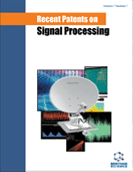Abstract
The monitoring of the power level during nuclear reactors operation is done by instruments, which measure the neutron flux. The calibration of this power is carried out by thermal means. Its accurate knowledge is critical to the fuel burnup calculations, and mainly to electrical power. Nuclear fuel burning is proportional to the thermal power released by the reactor and is extremely relevant for the calculation of uranium-235 mass burned, profile knowledge of fission products, the value of the radioactive decay heat, the activity and radiotoxicity. The objective of this paper is to present two methods for real time monitoring of nuclear reactor power using thermal processes. These methods have been developed and experimentally validated in the TRIGA nuclear research reactor at Nuclear Technology Development Center – CDTN (Belo Horizonte, Brazil), and are the focus of the paper described here. One uses the temperature difference between an instrumented fuel element and the pool water cooling below the reactor core. This method is innovative and the most reliable way of on-line power monitoring of the CDTN TRIGA reactor. For this methodology, a patent was deposited at the Brazilian Institute of Industrial Property (INPI) in 2012. The other method consists in real-time monitoring of the steady-state energy balance of the primary and secondary reactor cooling loops. This process is now the standard methodology for power calibration used in the CDTN TRIGA reactor. It also presents the uncertainty analysis for these thermal power measure procedures.
Keywords: Instrumentation, nuclear reactor, power measurement, reactor TRIGA, temperature, thermal power.
Graphical Abstract
 18
18

